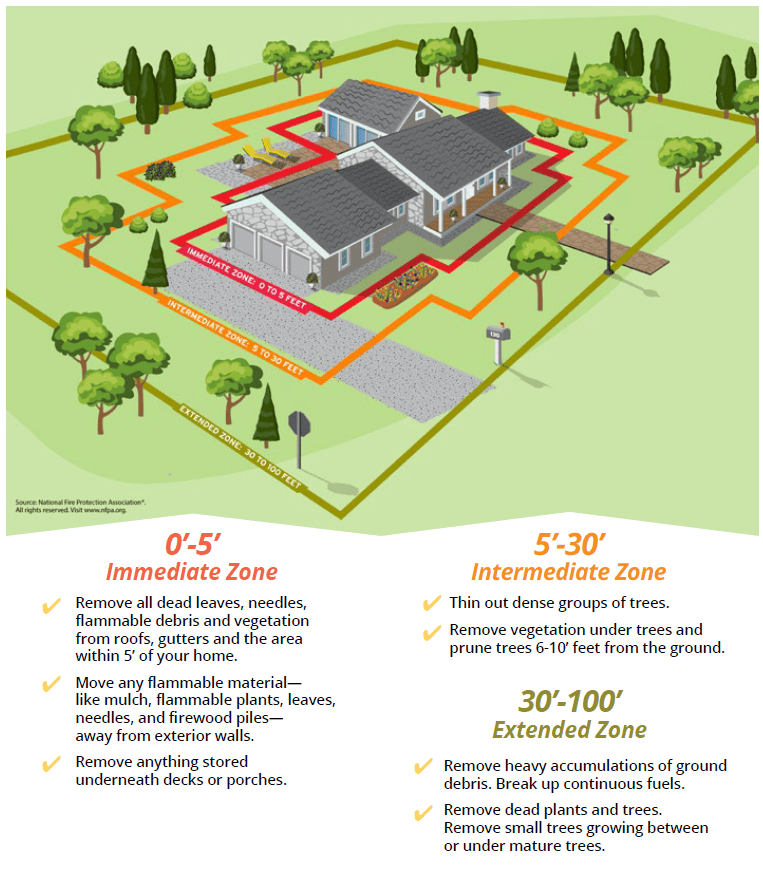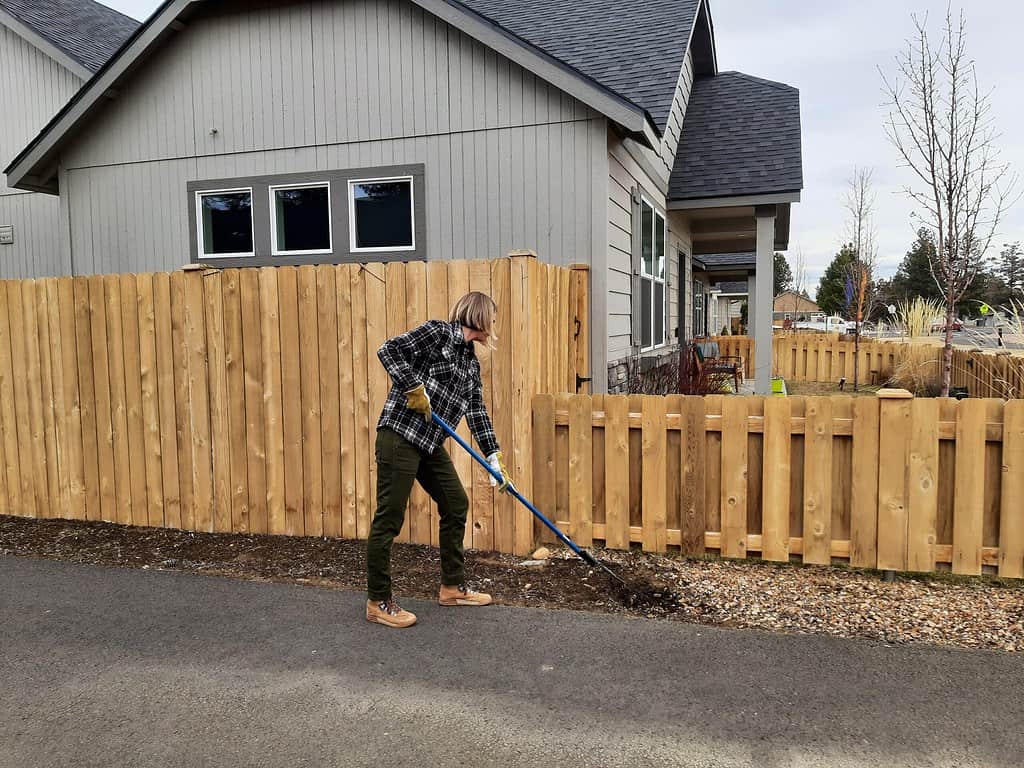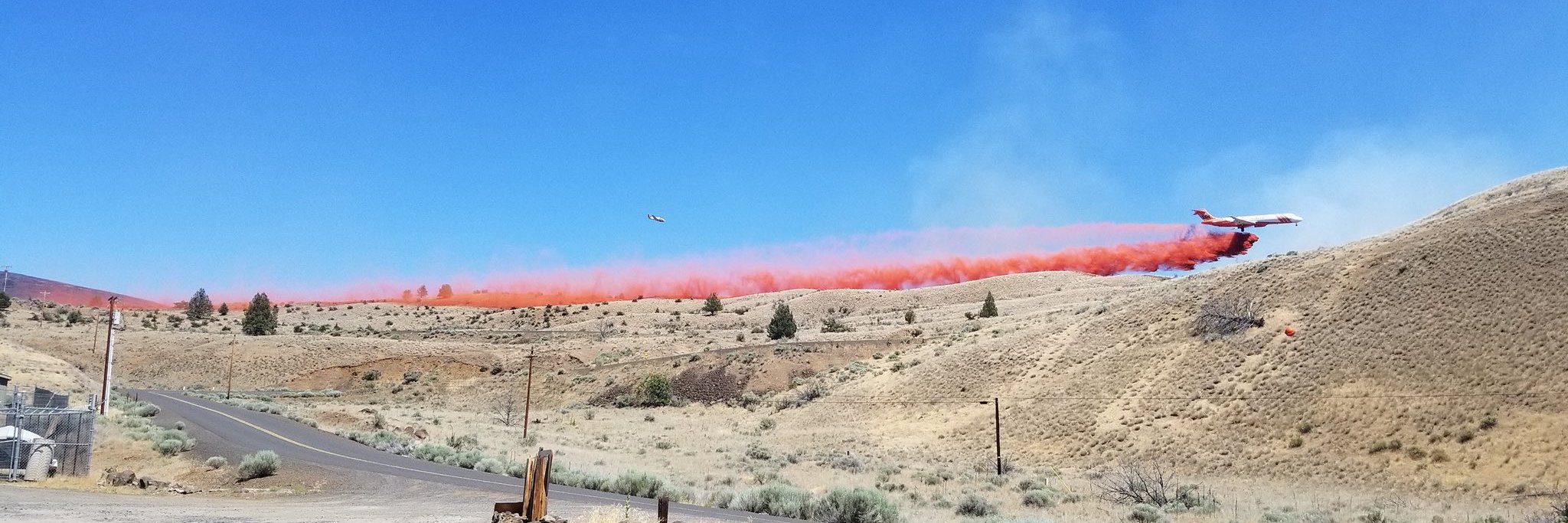With wildfire season just around the corner, there are a number of steps we can all take to prepare ourselves and reduce risk to our lives and property. Most homes are ignited by embers falling on vulnerable areas such as roof valleys, gutters and decks. Embers can travel miles ahead of a wildfire and start spot fires in pine needles and dry vegetation that can then ignite nearby flammable structures. Creating defensible space around your home does not need to look like a moonscape. Trees and shrubs can be part of a fire-resistant landscape as long they are spaced apart. It is everyone’s responsibility to prepare for wildfire.
Follow these 11 steps to help protect your home against wildfire:

1. Define Your Defensible Space
Create 30-100 feet of fire-resistant space around your home to prevent fires from starting near or spreading to your home.
2. Reduce brush near home & underneath trees
Trim or remove brush to eliminate a direct path for fire to reach your home or spread into trees by removing flammable brush species from your defensible space. Juniper, sage, bitterbrush and manzanita are highly flammable; replace them with fire-resistant plants. Manage invasive annual grasses like cheatgrass.
3. Prune or remove trees
Prune low hanging branches and thin out dense stands of trees to reduce the potential for fire to reach tree tops and spread to other trees.
4. Keep grass & weeds cut low
Trim grass and weeds to less than 4 inches to prevent the rapid spread of fire and high flames.
5. Clear wood piles & building materials away
Keep combustible materials at least 30 feet away from your home and outbuildings. Keep all brush and weeds at least 10 feet away from wood piles, propane, and fuel tanks.
6. Keep your yard & roof clean
Clear pine needles, leaves, and debris from your yard, deck, roof, and gutters to reduce places where embers can smolder and ignite your home. Remove overhanging and dead tree branches.

7. Keep address signs visible
Post easy-to-read address signs and trim vegetation away from driveways so emergency personnel can find and access your home quickly. If they can’t find you, they can’t help you!
8. Choose fire resistant building materials & lawn furniture
Use fire resistant roofing, siding, decking, and fencing materials. Choose non-combustible lawn furniture to prevent the spread of fire to your home. Install and maintain spark arrestors on chimneys. Visit https://wildfireprepared.org/ and watch these videos.
9. Recycle yard debris – avoid burning
Instead of burning, recycle or compost your yard waste. Debris burning can easily ignite a brush fire with a gust of the wind that rapidly overtakes a neighborhood.
Visit FireFree.org for 2023 dates, time, and locations of the annual Spring FireFree Events. Dispose of your needles, leaves, branches and brush for FREE!
10. Be prepared to respond to wildfire
Keep a 72-Hour kit handy. Know evacuation routes from your neighborhood and practice them with your family, using a checklist of what to do before leaving. Sign up for emergency alerts at oralert.gov and visit wildfire.oregon.gov/prepare.
11. Work with your neighbors
A community that works together survives together whether you live in a rural or urban setting. Discuss ways to support each other in preparing for wildfire season and know who might need help in case of evacuation. Learn more about becoming a Firewise Community.
Stay tuned for more information about wildfire preparedness being added to this website.




